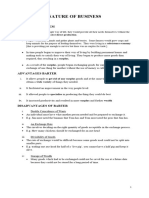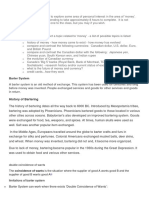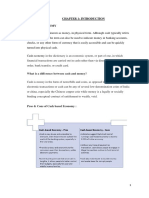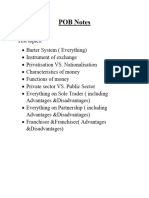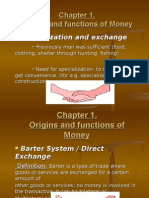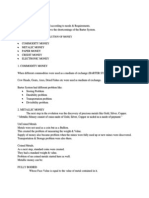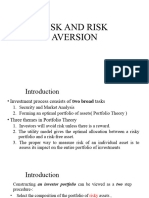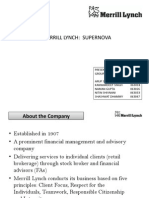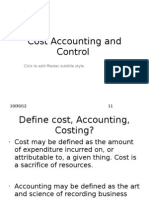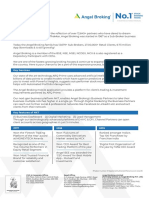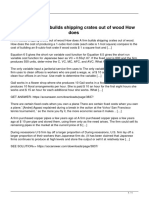0% found this document useful (0 votes)
78 views27 pagesPOB Lesson 2 Notes (Form 4)
The document provides an overview of various trading instruments and payment methods used in business from early barter systems to modern electronic payments. It discusses the evolution from direct commodity exchange, to the introduction of a medium of exchange like precious metals, the development of paper money and checks, and recent innovations including credit cards, electronic funds transfers, online banking, and e-commerce. The document aims to outline the history and nature of different instruments used in business transactions.
Uploaded by
Ryanna ChambersCopyright
© © All Rights Reserved
We take content rights seriously. If you suspect this is your content, claim it here.
Available Formats
Download as PPTX, PDF, TXT or read online on Scribd
0% found this document useful (0 votes)
78 views27 pagesPOB Lesson 2 Notes (Form 4)
The document provides an overview of various trading instruments and payment methods used in business from early barter systems to modern electronic payments. It discusses the evolution from direct commodity exchange, to the introduction of a medium of exchange like precious metals, the development of paper money and checks, and recent innovations including credit cards, electronic funds transfers, online banking, and e-commerce. The document aims to outline the history and nature of different instruments used in business transactions.
Uploaded by
Ryanna ChambersCopyright
© © All Rights Reserved
We take content rights seriously. If you suspect this is your content, claim it here.
Available Formats
Download as PPTX, PDF, TXT or read online on Scribd
/ 27






